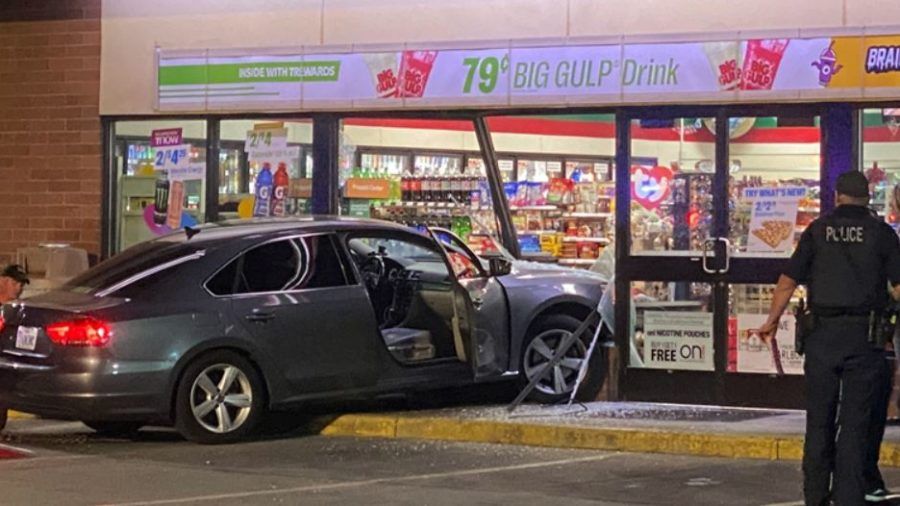Protect This House

Recently, a former co-worker/auto part extraordinaire sent me this Instagram post that, unlike Alanis Morrisette’s song, is actually ironic.
For those not in the know, 7-Eleven has a unique and fun place in car culture. #carsof7eleven is all over your favorite social media. According to Car and Driver, 7-Eleven has been encouraging “carfies” by reposting pictures using that hashtag since 2020. 7-Eleven’s footprint on social media has grown substantially since #carsof7Eleven went viral, with no signs of slowing down. This makes this car nut/college marketing major swoon. (Should I post a picture of my e30 M3 at 7-Eleven with a Slurpee on the wing?)


If you watch the news, you’ll likely know that 7-Eleven (and other convenience stores) has a magnetism for cars looking for more than just a “carfie”.


Unlike many things you read on the internet. The $91-Million settlement mentioned in the post above is real. It was the largest personal injury settlement in Indiana history according to CSP News. During the trial, it was shown that 7-Eleven had recorded 6,200 similar crashes happened across the United States! Despite vast amounts of insurance, separation between corporate 7-Eleven & franchisees, obvious operator error, and little cement barriers, it is clearly incumbent to install concrete bollards at the front of 7-Eleven stores.
If cars are so dangerous to 7-Eleven buildings, something they're never supposed to interact with, then why is it so taboo for cyclists to ask for protected bike lanes? Cyclists and cars interact with each other all of the time. With real consequences! According to the IIHS, in 2021, 961 cyclists were killed by car crashes. Instead of trying to do something to prevent cyclist fatalities, cyclists are typically blamed for their injuries/deaths. Why? Because they were not wearing a helmet. Or they didn't have fluorescent clothing on. Or, my personal favorite, they came "out of nowhere".
The sad truth about bicycle helmets is that they are not designed to protect a rider from an impact with a car.
According to Giro, a helmet industry leader who's products protect the melons of pro cyclists riding at ludicrous speeds, bicycle helmets are not designed to protect from automotive impacts. How could they? While helmet technology and testing has made leaps and bounds in the last few decades, they're still made out of the same stuff as disposable coffee cups. There's simply nothing that can go on a person's head to protect against a car weighing thousands of pounds.
Personally, in order to minimize any victim blaming that may occur should a car and my bicycle meet, I'm a calculating bastard. When I shop for a new helmet, I buy the highest scoring helmet on the Virginia Tech Lab rating that fits my head, regardless of cost. Then I stick a Specialized ANGi crash sensor on it. Any bike I'm riding always has rear and front mount strobe lights attached, just in case my fluorescent outfit is unnoticed by a colorblind driver. On top of all of that, I track every ride by GPS, leaving a digital record of virtually everything. I am also in the minority of cyclists in this regard, and the fact I go to such great lengths is sad.

The "best" bike lane my town is installed is at the intersection of Bearses Way and Route 28 in Hyannis, MA. Despite logging thousands of miles per year on a bike, I have never used it. Nor have any of my cycling friends. Why? It's unprotected garbage that literally doesn't go anywhere. It's painted lines start and end out of nowhere on one of the busiest stretches of road in the town of Barnstable. A stretch of road smart cyclists never use out of self preservation. (Perhaps the town decided painted lines were enough because the Speedway/Dunkin' doesn't have bollards in front of the building? No word on if any injuries/fatalities have happened at that store.)

The best bike lanes, like the best 7-Elevens, are protected from cars by bollards or tall curbs. They also give cyclists a place to ride from a quieter end of town to a busier one, safely. Perhaps with a few destinations a long the way. Cape Cod is a cycling hot spot in Massachusetts. Tourists and residents alike want to be here and ride bicycles places. I see hundreds of bikes of all types on car racks on the highway heading toward our cycling Mecca every weekend. And while there is some doom and gloom around proposed cycling infrastructure on Cape Cod, there is a master plan, based on actual studies, that will hopefully be finished some day. But not all towns or cities can say the same.
While many drivers see a cyclist on the road as an impediment, it's time that drivers look at a cyclist as one less car in their lane. It's time to realize that for every recreational cyclist on a training ride without a destination, there is a driver out for a pleasure cruise or a parent driving aimlessly to lull a baby to sleep. We already know that if lanes for cars are built, that more will come. It's the law of induced demand. The same goes for bicycle lanes, so long as they're well thought out.
If 7-Eleven buildings are worth protecting with concrete bollards, so are cyclists. The only reason 7-Eleven has done it sooner is because they have deeper, more tempting pockets to sue. That is a real shame.


Comments ()